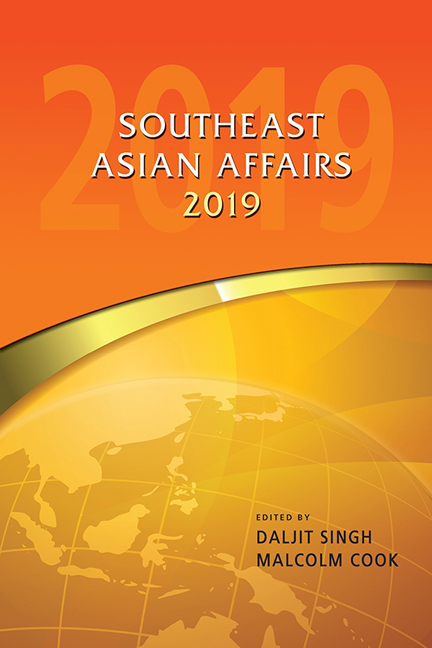Myanmar in 2018: New Democracy Hangs in the Balance
from MYANMAR
Published online by Cambridge University Press: 07 September 2019
Summary
The National League for Democracy (NLD) government has struggled to deliver on its promise of “change” since it swept into office with a landslide victory in the 2015 elections. The year 2018 saw a new push for reform, especially in the socio-economic arena. However, criticism of the government's handling of the peace process and the Rohingya crisis only grew in volume during the year, and business confidence remained subdued. For the majority of people in the country, there was little improvement in their daily lives.
The danger of persistent underperformance was brought home by the NLD's relatively poor showing in the November by-elections. The NLD won seven of the thirteen seats contested but lost three seats that it previously held to the Union Solidarity and Development Party (USDP) and another one to the Chin League for Democracy, suggesting that its hold on power may be weakening as the 2020 elections loom ever larger on the horizon. Meanwhile, broader systemic threats to Myanmar's new democracy are growing, both internally and externally.
A Push for Reform
While the majority of assessments of the NLD government continued to be overwhelmingly negative, it did take some important steps to strengthen governance and accelerate socio-economic reform. Through their first two years in office, government leaders had seemed largely dismissive of criticism, routinely insisting that they were focusing on long-term, structural issues and needed time to deliver. However, with the 2020 elections fast approaching, there appeared to be a growing recognition that new initiatives would be needed for the NLD to maintain voter support and consolidate civilian, democratic government.
The first major change came in March with the retirement of President Htin Kyaw and the subsequent election of former lower house speaker U Win Myint as the new head of state. Although State Counsellor Aung San Suu Kyi remained the de facto leader of the government, observers universally saw the choice of Win Myint as an important step, pointing to his reputation as a more decisive leader than his predecessor. At the same time as his election as president, Win Myint was also appointed as new vice-chairman (1) of the NLD, thus seemingly positioning him as the successor of Aung San Suu Kyi. The party billed this as a rejuvenation of the party leadership, which also included the appointment of Mandalay Region chief minister U Zaw Myint as vice-chairman (2).
- Type
- Chapter
- Information
- Southeast Asian Affairs 2019 , pp. 225 - 242Publisher: ISEAS–Yusof Ishak InstitutePrint publication year: 2019

